Brain normalization methods are procedures for transforming individual brain images into a standard anatomical coordinate space. They require a suitable template image which is already in the standard space, and an elastic matching procedure for warping the images appropriately.
The Brain Normalization (SPM99) and Deformable Matching (SPM5) methods have been implemented according to the methodologies used in SPM99 [9] and SPM5 respectively.
Deformable Matching (SPM5) adjusts the input image to a template image by applying an affine transformation first, followed by iterative elastic adjustments.
Note: For work with small animal data only the Deformable Matching (SPM5) method should be applied.
Human Available Templates (Atlases)
Template (or Atlas) images represent a "standard" anatomy imaged with a certain modality.
For the spatial normalization of human brain images the MNI (Montreal Neurological Institute) templates are commonly used.
The human brain templates provided with PMOD are all head first supine (HFS) oriented and are located at D:/Pmod4.2/resources/templates/normalization/ .
In PFUS with the combined matching layout they can be retrieved by Autodetect and using the brain ![]() shortcut button in the loading interface as illustrated below:
shortcut button in the loading interface as illustrated below:
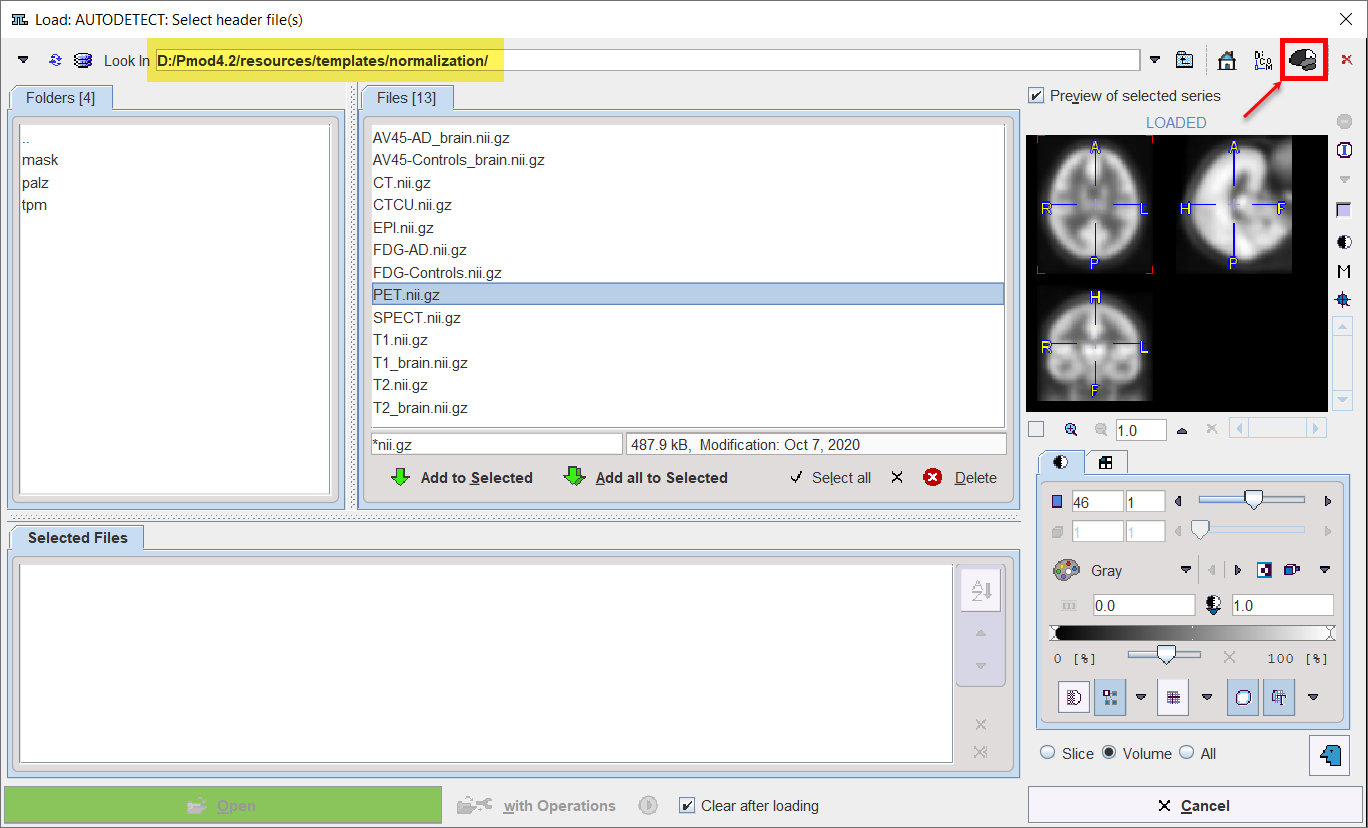
For example, loading PET.nii.gz results in the following result:

The available Human brain templates:
PET |
PET template provided with SPM5 (Statistical Parametric Mapping). It was constructed by Friston et al. at the Wellcome Department of Cognitive Neurology (University College London, UK) using Oxygen-15 water PET images of 12 normal subjects scanned in resting condition with eyes closed. The template is in MNI (Montreal Neurological Institute) coordinates. |
T1 |
T1 template provided with SPM5. The image was derived from the ICBM152 image which represents the average of 152 healthy T1 brain images by reducing it to 2mm isotropic resolution and smoothing with an 8mm FWHM Gaussian filter. The original ICBM152 data originates from Alan Evans, MNI, Canada (ICBM, NIH P-20 project, Principal Investigator John Mazziotta). |
T2 |
The same as the T1 above, but with the T2 MR images. |
SPECT |
SPECT template provided with SPM5. It was created by Leighton Barnden et al from the Department of Nuclear Medicine at the Queen Elizabeth Hospital in Adelaide 22 normal female subjects. Each was scanned after injection of Tc-99m HMPAO on a triple head camera with ultra-high resolution fanbeam collimators. |
T1_brain |
As the T1 above, but with the skull part of the image removed. |
T2_brain |
As the T2 above, but with the skull part of the image removed. |
The human CT and CTCU template are to be used with the Template-based normalization for brain CT matching method.
The amyloid tracers, e.g. AV45, have different pattern distribution as compared to the SPM5 Oxygen-15 water PET template. When such images data are analyzed the PET based normalization will not work. Therefore, we created group specific (AV45-Controls_brain and AV45-AD_brain) AV45 PET templates using ADNI data. The description of the template methodology is available for direct download. The same methodology was used to create group specific FDG PET templates using FDG images available via ADNI repository database.
PRIMATE Normalization Templates
These templates are are in Niftii format and accessible via load by Autodetect. They are located in the "normalization" folder of the dedicated template available at D:/Pmod4.2/resources/templates/voitemplates/:
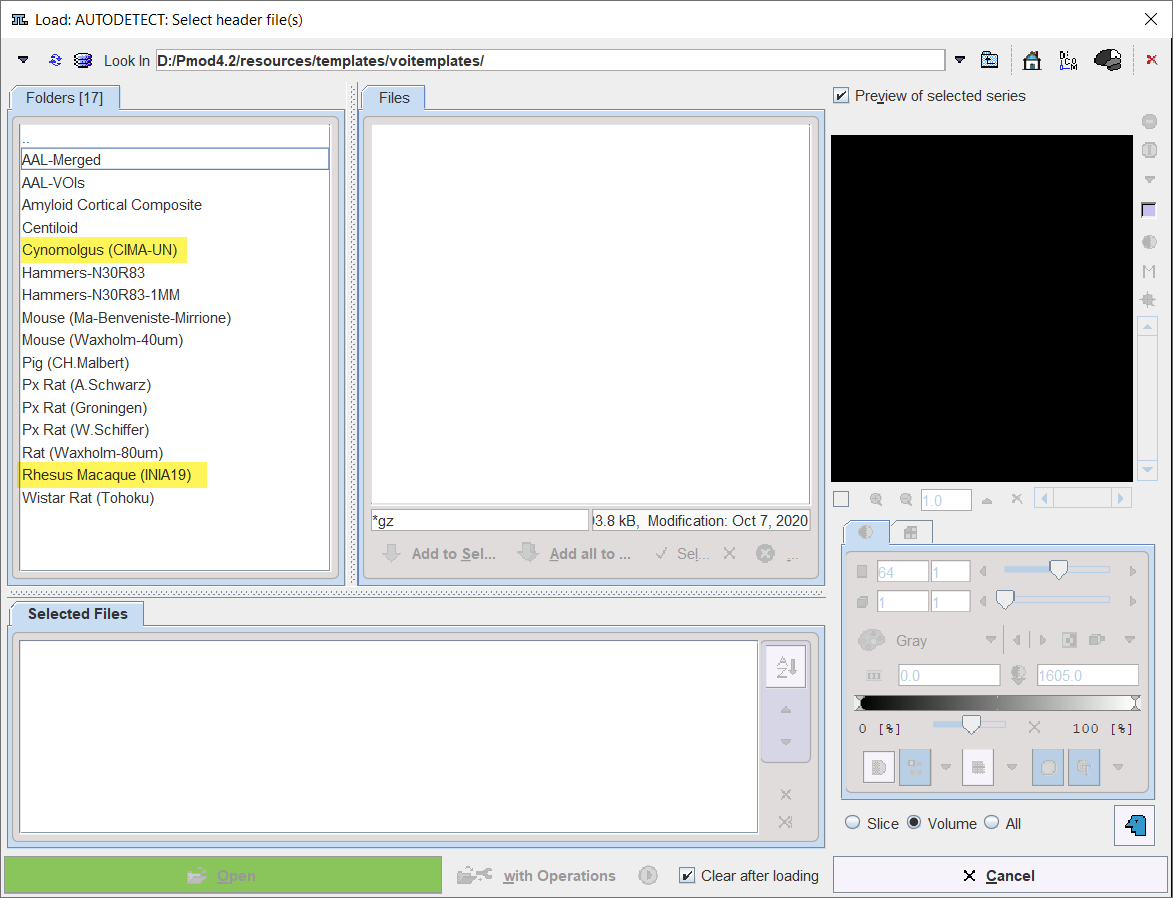
1.Cynomologus (CIMA-UN)
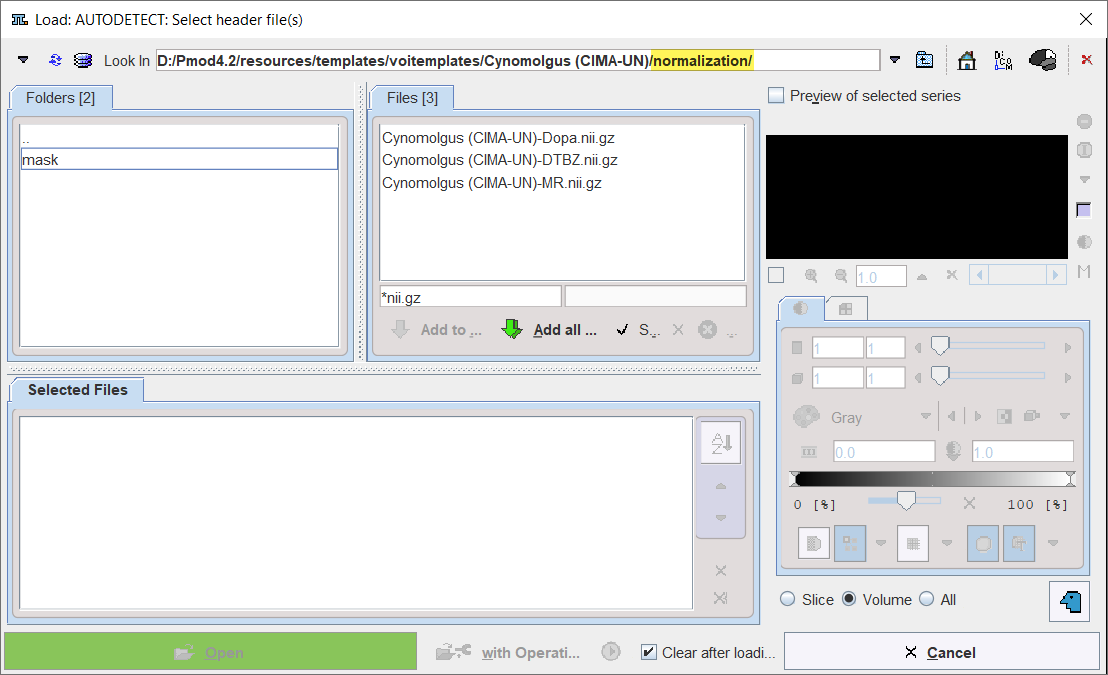
2.Rhesus Macaque (INIA19)

Small Animal Available Templates (Atlases)
These templates are in Niftii format and accessible via load by Autodetect. They are located in the "normalization" folder of the dedicated template available at D:/Pmod4.2/resources/templates/voitemplates/:
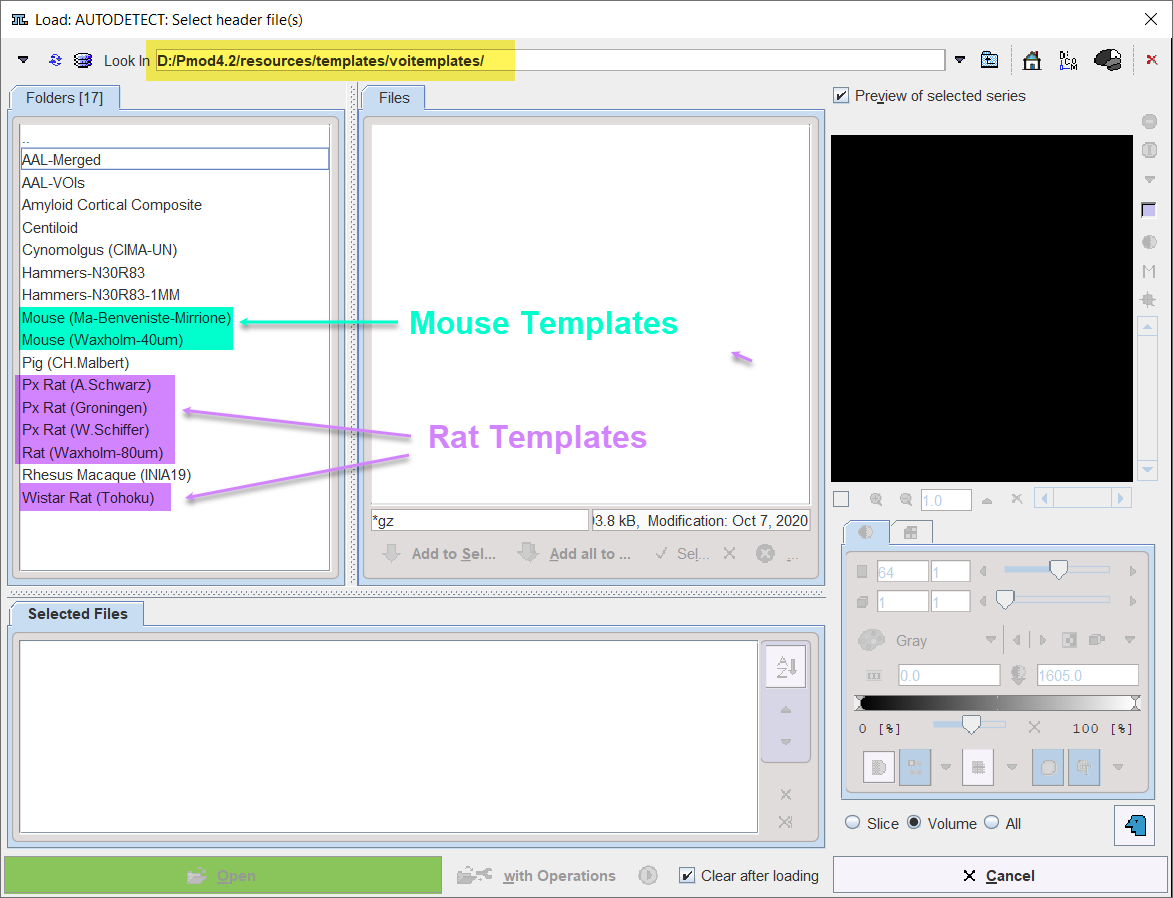
RAT Normalization Templates
1. Px Rat (A.Schwarz)
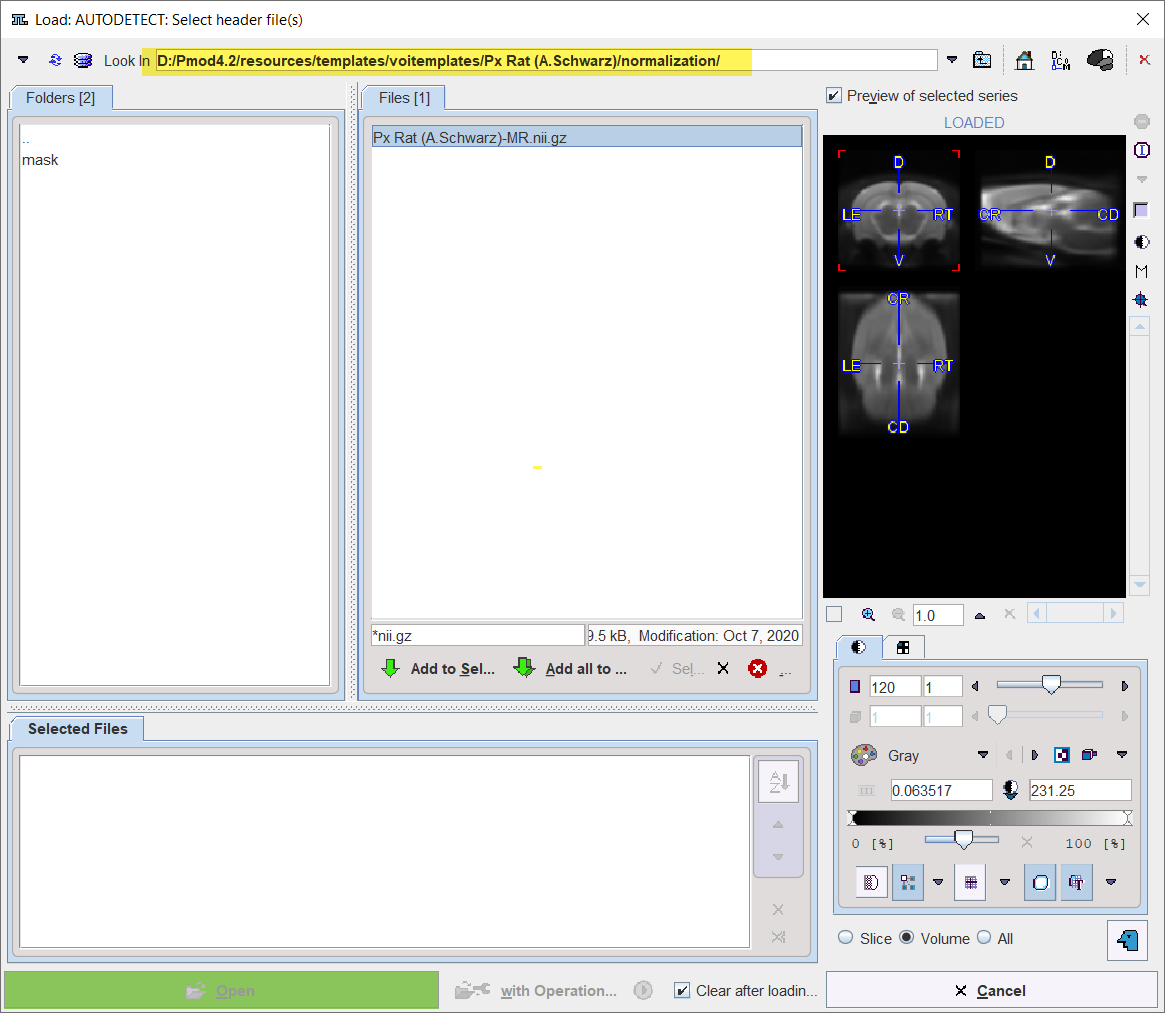
2.Px Rat (Groningen)
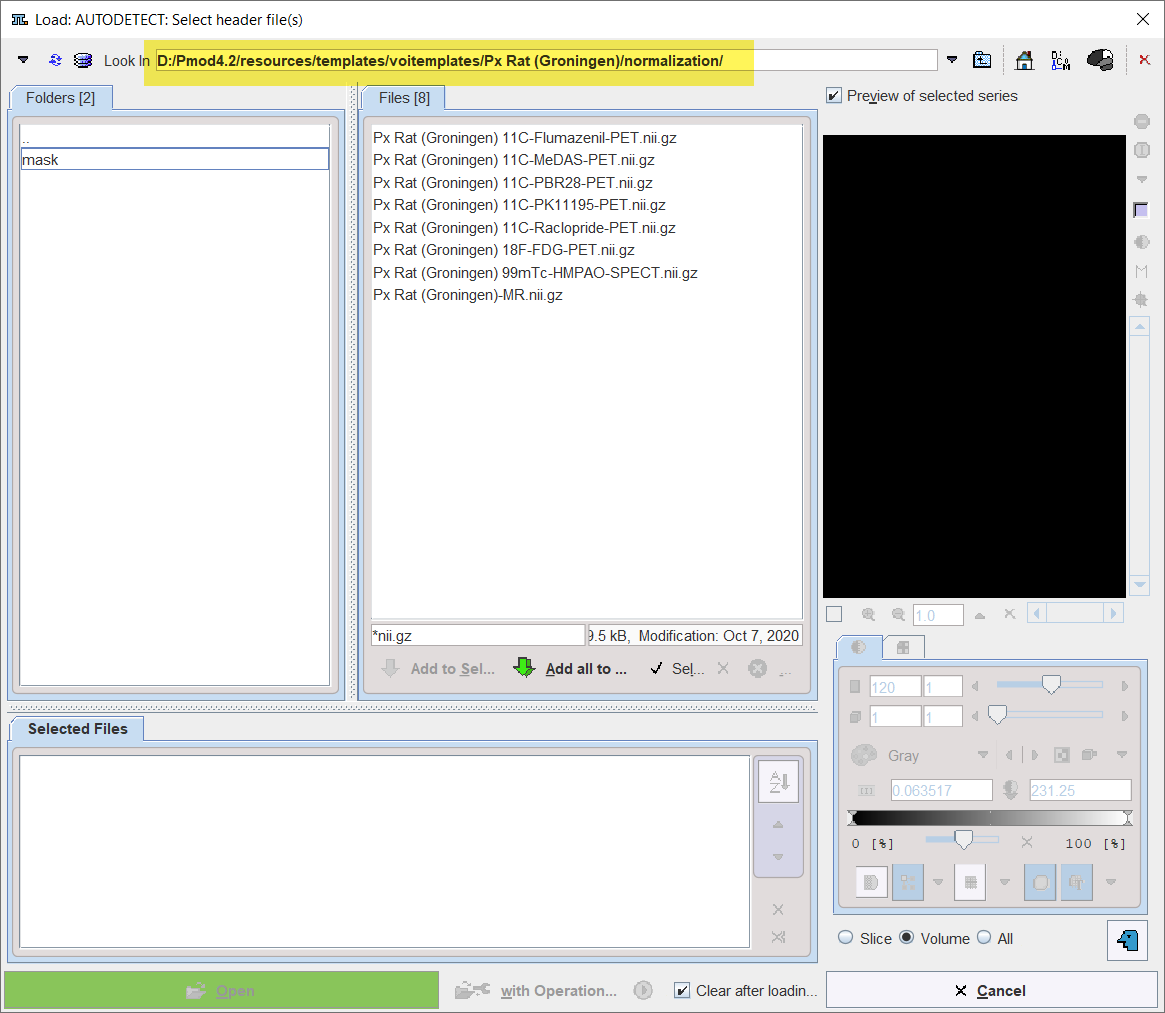
3.Px Rat (W.Schiffer)
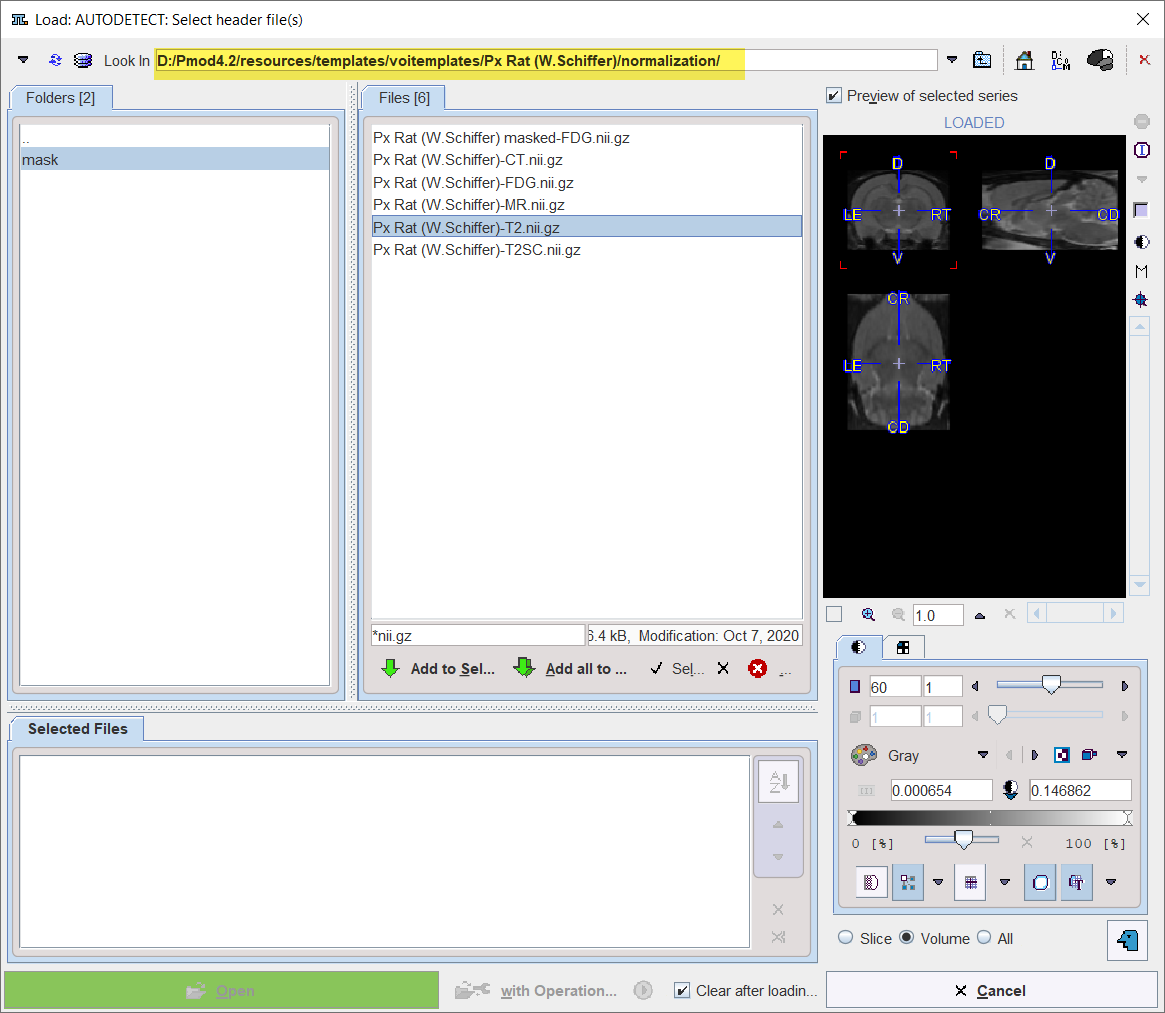
MOUSE Normalization Templates
Mouse (Ma-Beneviste-Mirrione)
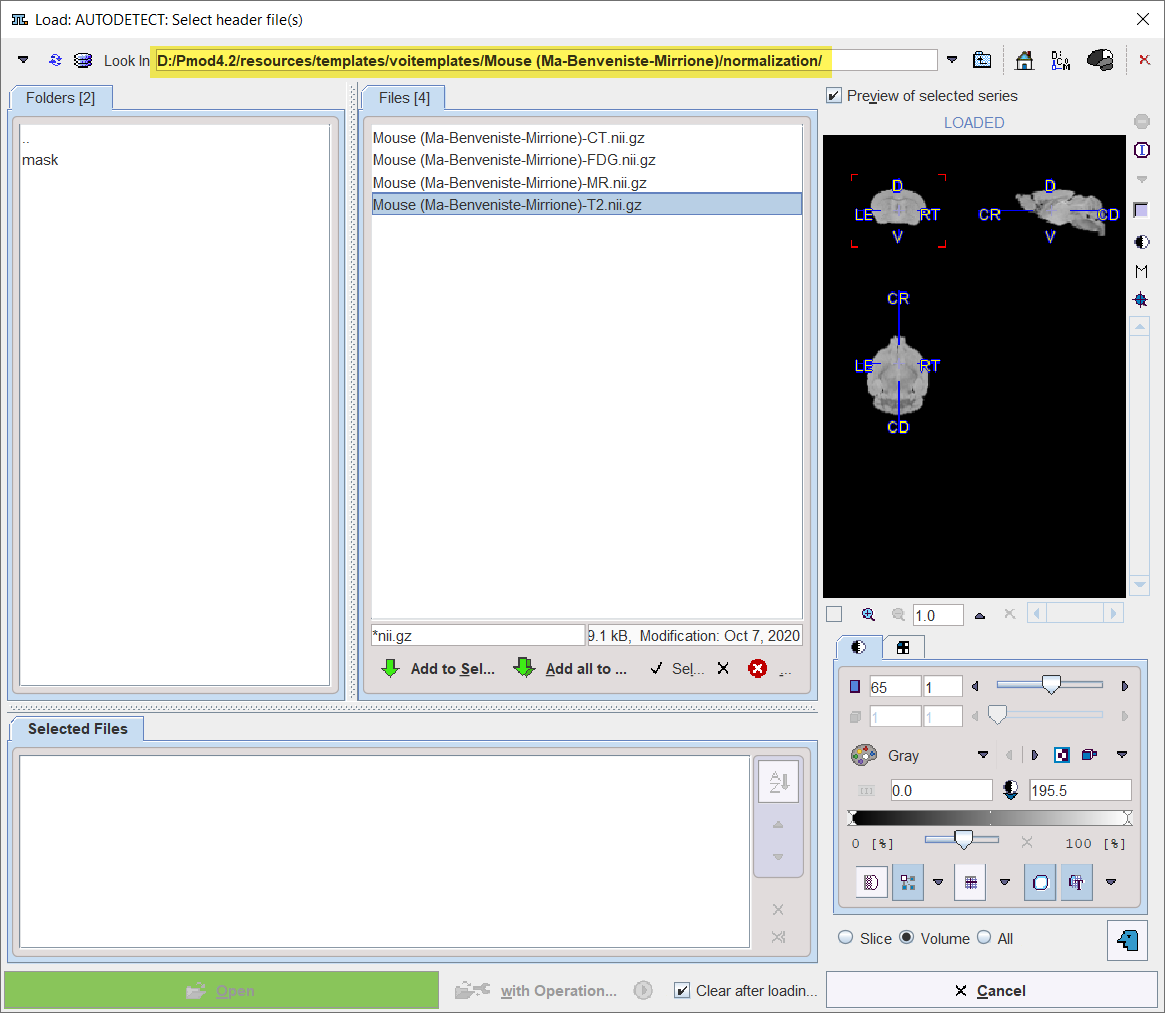
The PMOD distribution already includes detailed templates description in the PMOD Base Functionality Guide.